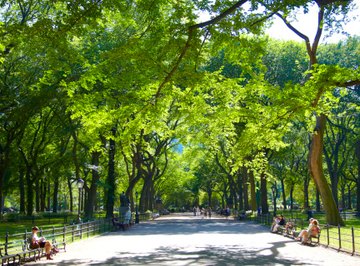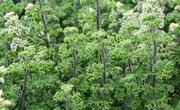
In many respects, plants are not very different from people. If you were to break down a plant and a person into their basic elements, you’d find that both contain more carbon, hydrogen and oxygen than anything else (though the plant would likely complain less about the process.) But there are some significant differences in how the elements in plants and people are arranged.
Elements
In addition to the carbon, hydrogen and oxygen that make up the vast majority of both plant and animal cells, plants will contain nitrogen, phosphorus, potassium, calcium, magnesium, zinc, sulfur, chlorine, boron, iron, copper, manganese and molybdenum. Some of these are found in only very trace amounts, and the composition may vary between different types of plants.
Cell Wall
A major difference between plants and animals is that plant cells are surrounded by a cell wall, which animal cells lack. The major component of the cell wall is cellulose, which is a polysaccharide, a large molecule made up of many smaller sugar molecules linked together. Glucose is the subunit in cellulose. In addition to cellulose, plant cell walls contain lesser amounts of hemicellulose and pectin; both of which are also large molecules made up of repeating smaller subunits.
Chlorophyll
Plants, unlike animals, can obtain energy directly from the sun, thanks to the extraordinary chemical chlorophyll. There are two main types of chlorophyll: a and b. Both are very similar and differ only in a small side chain within the large molecule. Like most chemicals involved in life processes, it’s mostly carbon, hydrogen and oxygen. There are four nitrogen atoms within a chlorophyll molecule and, at the center of the molecule, one atom of magnesium. Chlorophyll is able to take energy in the form of sunlight, and chemically convert carbon dioxide and water into glucose and oxygen.
DNA and Protein
Both plants and animals are eukaryotic, meaning the cells contain a nucleus at the center containing the genetic material. Although there are many differences between plants and animals, there is a remarkable similarity on this level. Plants, like animals, use DNA, consisting of the same sugar-phosphate backbone and using the nucleotide bases adenine, guanine, thymine and cytosine, to code for amino acids to construct proteins. Although the proteins coded for differ, the code is exactly the same. People and plants have a lot in common, though most people are more interesting conversationalists. There are some exceptions.
References
About the Author
Andrew Breslin has been writing professionally since 1994. His articles and op-ed pieces have appeared in the "South Florida Sun Sentinel," "St Paul Pioneer Press," "Detroit Free Press," "Charlotte Observer," “Good Medicine,” and others. He studied molecular biology at Westchester University and frequently writes about science and mathematics.
Photo Credits
Thomas Northcut/Photodisc/Getty Images
